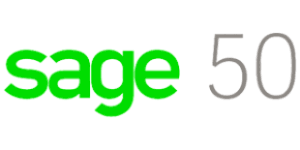
Sage 50 Accounting (US) is a business management software subscription-based product published by Sage Group and sold in the United States. It was previously called Peachtree Accounting (U.S.). A conversion to the Peachtree / Sage 50 U.S. data format was made available when Simply Accounting (U.S.) was taken off the market. As of the 2013 edition, the U.S. software is now called Sage 50 (U.S).
Peachtree Accounting was originally sold by a software publisher founded in 1978 by Ben Dyer, Ron Roberts, Steve Mann, and John Hayes. The company was carved out of The Computer SystemCenter, an early Altair dealer founded by Roberts, Mann, Jim Dunion, and Rich Stafford, which Dyer had joined as the manager and where the first software was published in 1977.
What is Sage 50?
Sage 50 is positioned as an easy-to-use desktop accounting software for growing small businesses, but is scalable to perform big business accounting. It includes standard accounting such as: accounts payables and accounts receivable; bill payments and cash flow management.
Likewise, Sage 50 can perform faster processing, has industry-specific functions and can be used by up to 40 employees. It features advanced accounting tools like inventory management and module-level security. You can also add options for payroll services and credit card processing to help manage your finances.
Sage 50 has a mobile app for iOS, Android, and BlackBerry devices and works smoothly with popular productivity tools, such as, Microsoft Excel, Outlook, Word and Exchange and Sage-endorsed third-party applications in 22 industries.
Overview of Sage 50 Benefits
Here are the main Sage 50 benefits:
- Flexible enough for CPAs and non-accountants
- Goes beyond accounting and includes essential business operations
- Has basic accounting modules and useful modules, including options for credit card processing and inventory management and reporting and a customizable dashboard for quick access to important data
- Has automatic backup, which is critical to protect your numbers
- Compatible with other Sage products and can be scaled to match your business growth
- Easy to learn even for non-accountants
- Enjoy screen-level security
- Features automatic accounting checks
- Installed in your local computer
Overview of Sage 50 Features
- Basic accounting
- Invoice through mail or email
- Monitor cash flow
- Pay bills online
- Excellent inventory and job management
- Fixed assets management
- Job/Project management
- Vendor Management Center
- Customer Management Center
- Inventory and Services Management Center
- Dig up insights in data
- Over 100 customizable reports and financial statements
- Sage Business Care Silver
- Sage Advisor
- Multi-User up to five licensed named users
- Terminal Services
Course Syllabus
Getting Acquainted with Sage 50 The Sage 50 Environment The Sage 50 Navigation Centers Using the Menu Bar Customizing Shortcuts Learning Common Business Terms Setting Up a Company Creating a Sage 50 Company Converting a Company Using the General Ledger General Ledger Default Settings Adding Accounts Using Sales Tax Entering Records Entering Customer Records Entering Customer Beginning Balances Entering Vendor Records Accounts Receivable Setting Statement and Invoice Defaults Quotes, Sales Orders, Proposals and Invoicing Accounts Payable The Purchase Orders Window Entering a Drop Shipment Select for Purchase Orders The Purchases/Receive Inventory Window The Payments Window Managing Inventory Building and Unbuilding Assemblies Making Inventory Adjustments Changing Item Prices Creating Payroll Adding Employees Adding Employee Beginning Balances Performance Reviews and Raise History Paying a Group of Employees Paying an Employee Account Management Writing Checks Voiding Checks Reconciling Bank Accounts Changing the Accounting Period Job Tracking Setting Up a Job Creating Custom Fields for Jobs Creating Phases for Jobs Creating Cost Codes for Phases Entering Beginning Balances for a Job Time and Billing Adding Time Ticket Employees Entering Activity Items Entering Charge Items Settings and Tools Changing the Company Info and Posting Method Posting and Unposting Memorized Transactions Reporting The Cash Flow Manager The Collection Manager The Payment Manager The Financial Manager Find on Report Previewing and Printing Preset Reports Action Items Events To-Do Items Alerts Options Changing Global Options Changing the System Date Assets and Liabilities Assets and Liabilities Creating an Other Current Assets Account
For more Details Call: +91 9633 799 666
